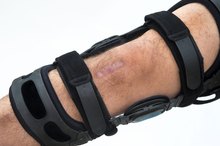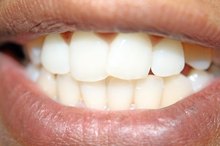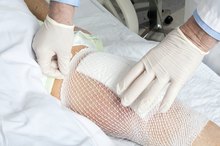Problems with Partial Knee Replacements
Partial knee replacement surgery is a common procedure designed to replace damaged portions of a knee joint with artificial implant materials. Although a highly effective form of treatment for a variety of knee joint problems, there are certain problems that can occur with a partial knee replacement implant.
Implant Loosening
Over time, the artificial implant materials in a partial knee replacement can lose their fixation to the knee joint and become loose, a condition that causes knee pain and reduced mobility. It normally results in revision, or re-replacement, surgery.
Implant Wear
What Causes Fluid to Build Up After a Knee Replacement Surgery?
Learn More
Artificial joint implant materials, although durable and long-lasting, develop wear over time, as the result of repetitive use. The gradual wearing of an artificial knee replacement implant is a common and expected problem associated with partial knee replacement surgery that normally results in the need for revision surgery.
Implant Breakage
Although rare, partial knee replacement implants can break and/or fracture as the result of injury or defective implant materials, a condition that requires removal of the broken implant materials and revision surgery.
Activity Restrictions
Complications After Partial Knee Replacement
Learn More
As great as partial knee replacements are at restoring knee joint mobility and reducing knee joint pain, they do require the observance of certain activity restrictions in order to maximize their longevity. For recipients, doctors recommend the avoidance of high-impact, high-stress-loading activities like running, jumping and competitive sports.
Osteolysis
Osteolysis, a condition that results in the loss of bone around an artificial joint implant, is potential problem with partial knee replacements. Although the exact cause is unknown, osteolysis can weaken a partial knee replacement and cause it to become loose and painful.
Related Articles
References








